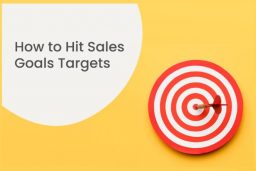
In our article Why Sales Development Representatives Are Important to Sales, we covered what SDRs do and how they influence your potential clients in their buying decision. Now that you have a team of SDRs in place, you would be interested and curious in knowing how well they are doing the job they are hired for. In this part we will throw some light on metrics to track their performance.
More qualified leads increase conversion rates and lead to improved revenue. We’ve picked three important sales metrics to track performance of SDRs supporting field sales:
1. Time taken to schedule first appointment
SDRs primary job is to build relationship with the prospects who are business decision makers/ leaders across industry and who might see value proposition in your company’s product. So, from the time one such hot lead gets identified SDRs have to gauge when the time is right to make first contact and seek face to face meeting for a product demo.
Obviously, these outbound hot leads cannot be approached with a regular marketing emailer campaign or regular sales pitch. Based on their thorough research about client’s profile, budget and if at all they have the need to implement your solution, SDRs curtail and personalize the mail or any marketing material for instance.
If a SDR waits too long to establish that first contact there might be chances of losing this hot lead to your competitors. Hence, it is important for you to have hint of how long does it take for your SDR to make that first and right move because faster the first move, closer your sales team is to making a conversion.
This is where lead scoring comes into picture. Lead score is a method used by SDRs and sales executives to weigh the value of prospects based on certain metrics. In turn, this helps them to assign priority to leads and to have fair hint on the ideal time to move towards first appointment without moving too fast or too slow.
We’ve developed Data Scout keeping in mind the hyper specialization in the sales and marketing landscape. With the aid of Data Scout you can easily find out who your star SDR performer is and predict opportunities which are likely to close across global sales territories and much more.
2. Lead to opportunity conversion ratio
This is a very simple but important metric. In sales classification it is also called MQL (Market Qualified Lead) to SQL (Sales Qualified Lead) conversion rate.
The basic difference between SDRs and Sales Executives is that SDRs don’t have set targets. Sales Executives’ performance is measured by number of deals they close, while SDRs are held accountable for passing number of leads in the form of opportunities to the sales executives.
MQL is generally hot prospect who has shown interest in your product after number of touch base and contacts established by your SDR. The identified lead has moved to next stage of being called MQL. This lead now gets passed on to sales executive and is called SQL. This means that the lead is considering to purchase your product so is ready for a follow up. Measuring just the number of MQLs presents distorted perspective because SDRs might transfer lesser qualified leads to the sales executives’ bucket. Hence, it is important to see how many qualified leads which get passed on by SDRs actually get converted.
3. Size of the deal
When it comes to fetching lead by outbound means, SDRs main goal is to bring big value opportunities, which implies better revenue for your business. This necessarily can’t be met through inbound leads in the pipeline. To achieve this SDRs have to spend substantial amount of time in doing research and gathering information about the new prospects. Pursuing starts based on the initial research work. SDRs become the face of your product when they are trying to court big deals and establish a rapport with them.
While all deals can’t be won, especially the big ones which are hardest, this doesn’t become the sole criteria for judging a SDR’s credibility. As mentioned before lot of effort and time are spent into designing numerous activities by your SDR to add one big client in your business portfolio!
Do you use data to know the size of various deals your SDRs are targeting? Which data-points do you consider to track your SDRs’ performance? What data and tool your SDR team uses to manage pipeline and time? We would love to hear that from you.
More resources on this:
Deciding What Metrics to Track for Sales Development Reps
How Can I Tell When An SDR Is Struggling?
How to Choose, Track and Improve Key Sales Development Metrics for Predictable Growth
For more information about MoData offerings click here




